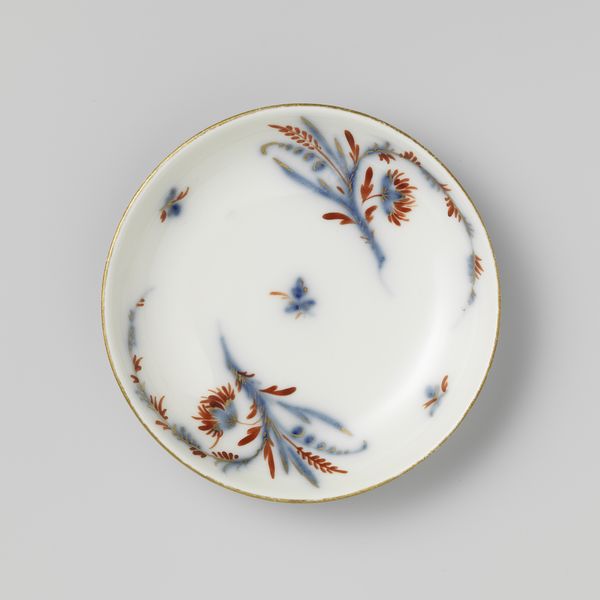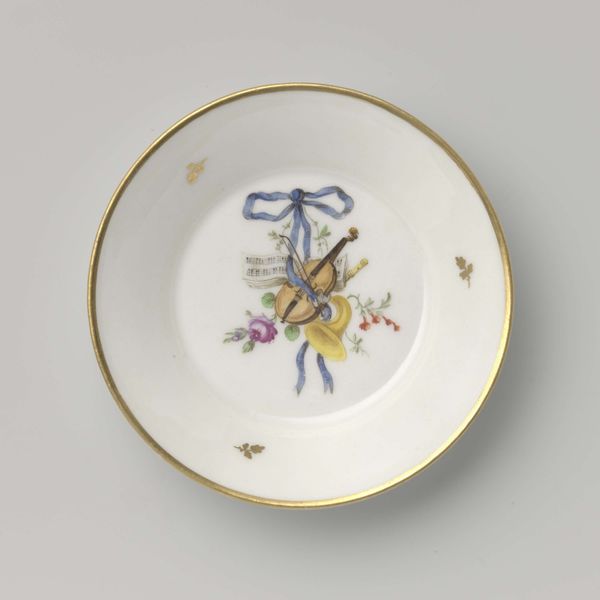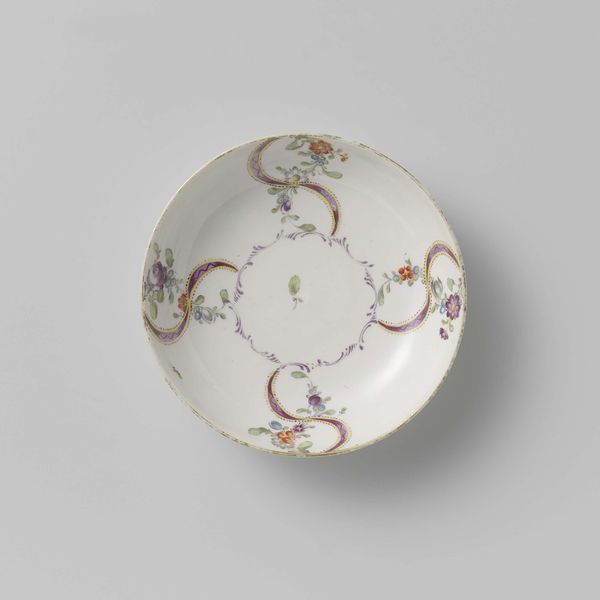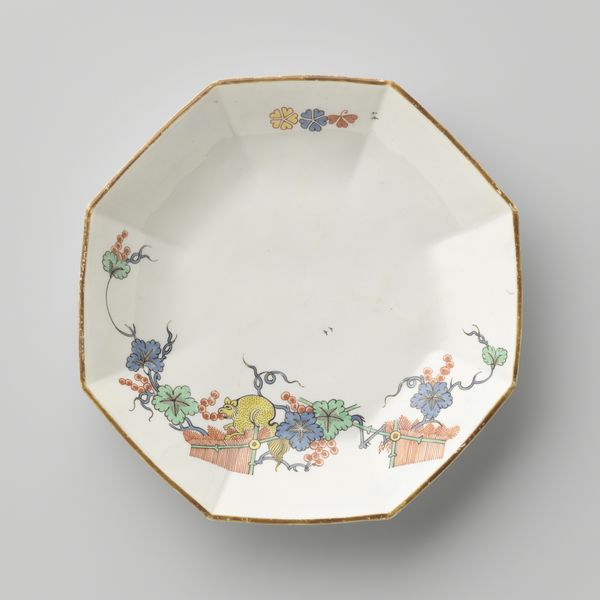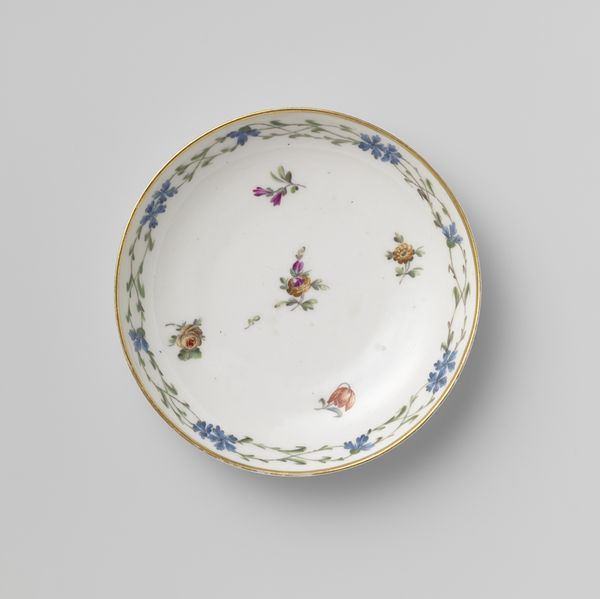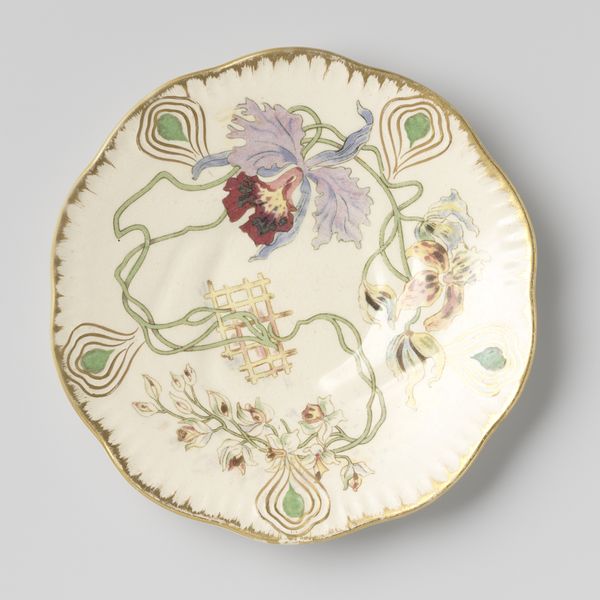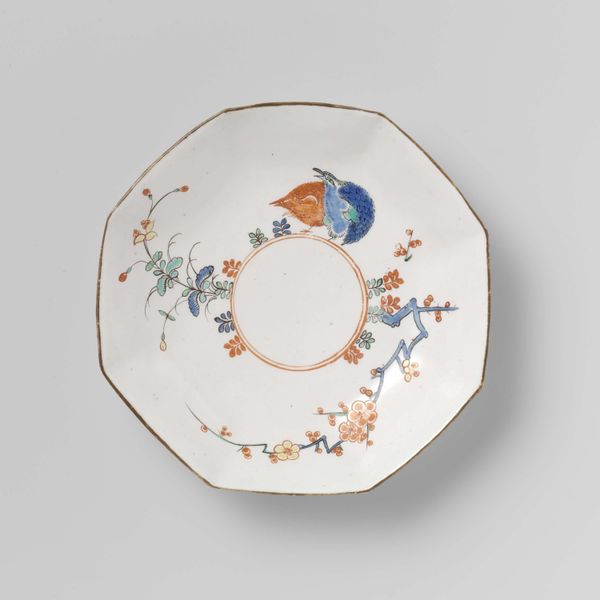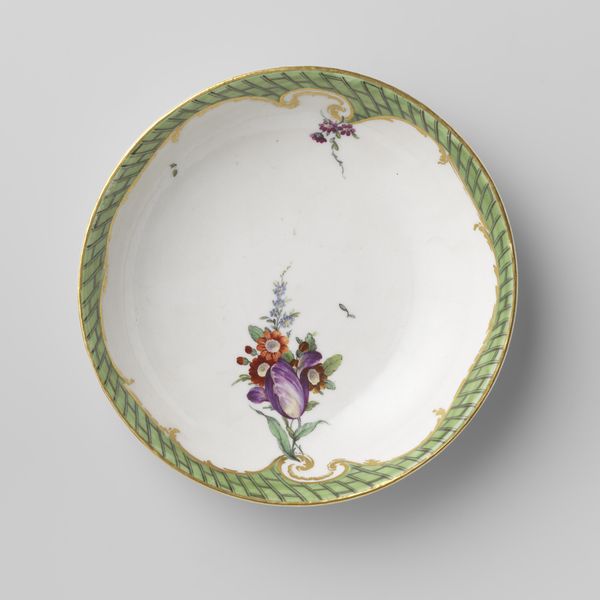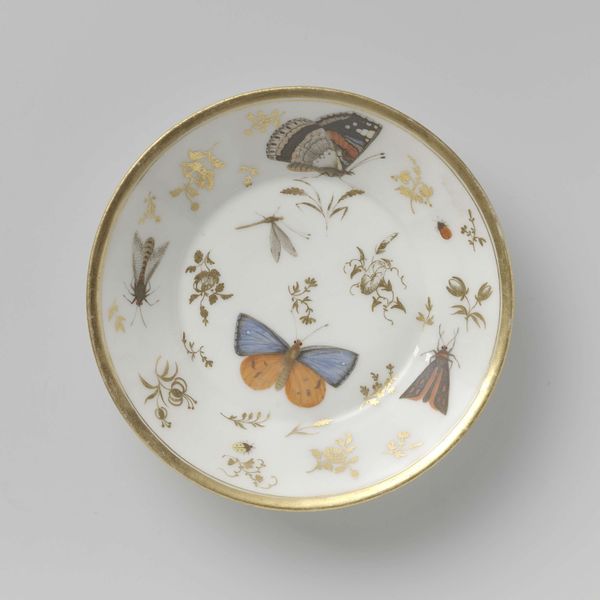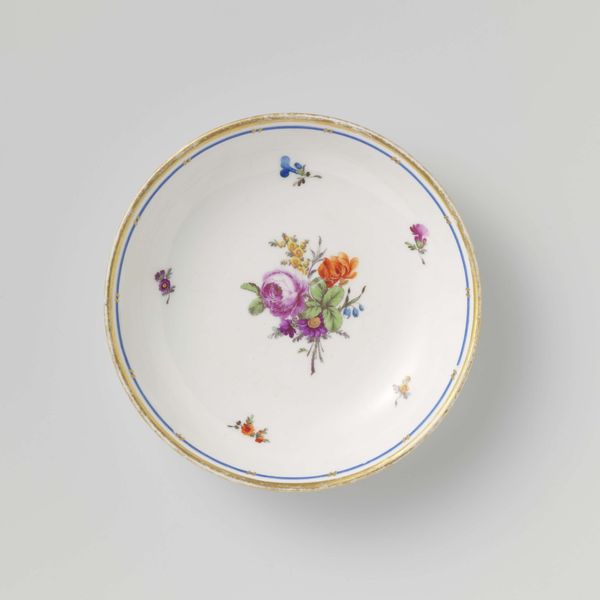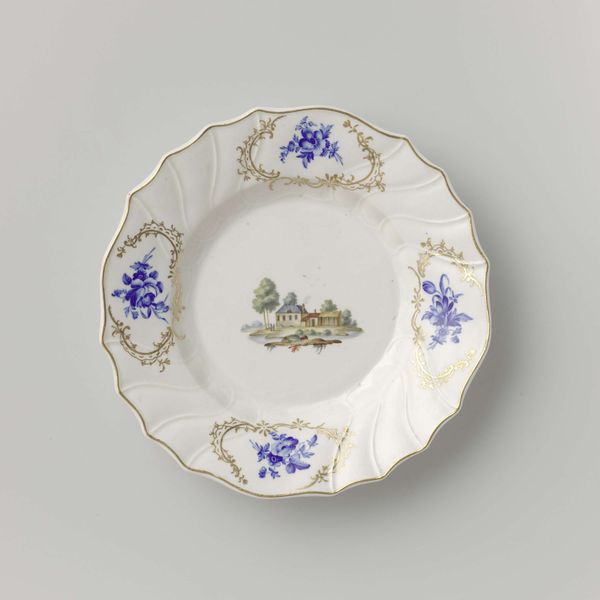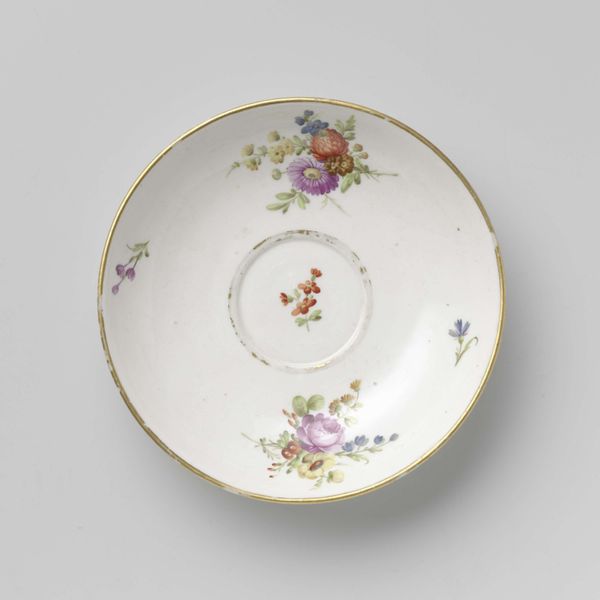
Dimensions: height 2.2 cm, diameter 11.4 cm, diameter 6.4 cm
Copyright: Rijks Museum: Open Domain
Editor: So, here we have a delightful "Saucer with flower sprays" made of ceramic in Le Nove, dating back to sometime between 1765 and 1799. It looks so delicate, almost like it shouldn't be touched. How would you read this piece? Curator: Looking at this object, I’m drawn to its materiality. Ceramic production in the Rococo period wasn't just about aesthetics; it was deeply tied to specific materials and labor practices. How do you think the availability of specific clays and pigments influenced the design and production? Editor: That’s interesting! I guess I never really considered the materials themselves as much. It’s easy to just see the finished product. Do you think that access to certain resources limited the artistic freedom of the craftsmen? Curator: Absolutely. Consider the specific type of clay used and its firing temperature requirements; these would significantly dictate the final form and decoration possibilities. The blue trim is a cobalt-based pigment. The ability to source, process, and afford these materials would’ve directly shaped the kind of artwork created and for whom it was destined. Editor: It’s also interesting to think about who made these objects, especially in this era. The work involved would have been extremely laborious. Curator: Exactly. We have to consider the socio-economic context, including the factory system that developed in Le Nove and its implications for the lives of the ceramic workers. This wasn’t just high art; it was labor, industry, and trade, impacting a wide range of people. Editor: That really gives me a new way to appreciate it. Seeing the link between the materials, the process, and the social aspects. Curator: It makes you see it as a product of its time in a much richer way, doesn't it? The piece transcends from being a pretty object, into a commentary of the process itself.
Comments
No comments
Be the first to comment and join the conversation on the ultimate creative platform.

